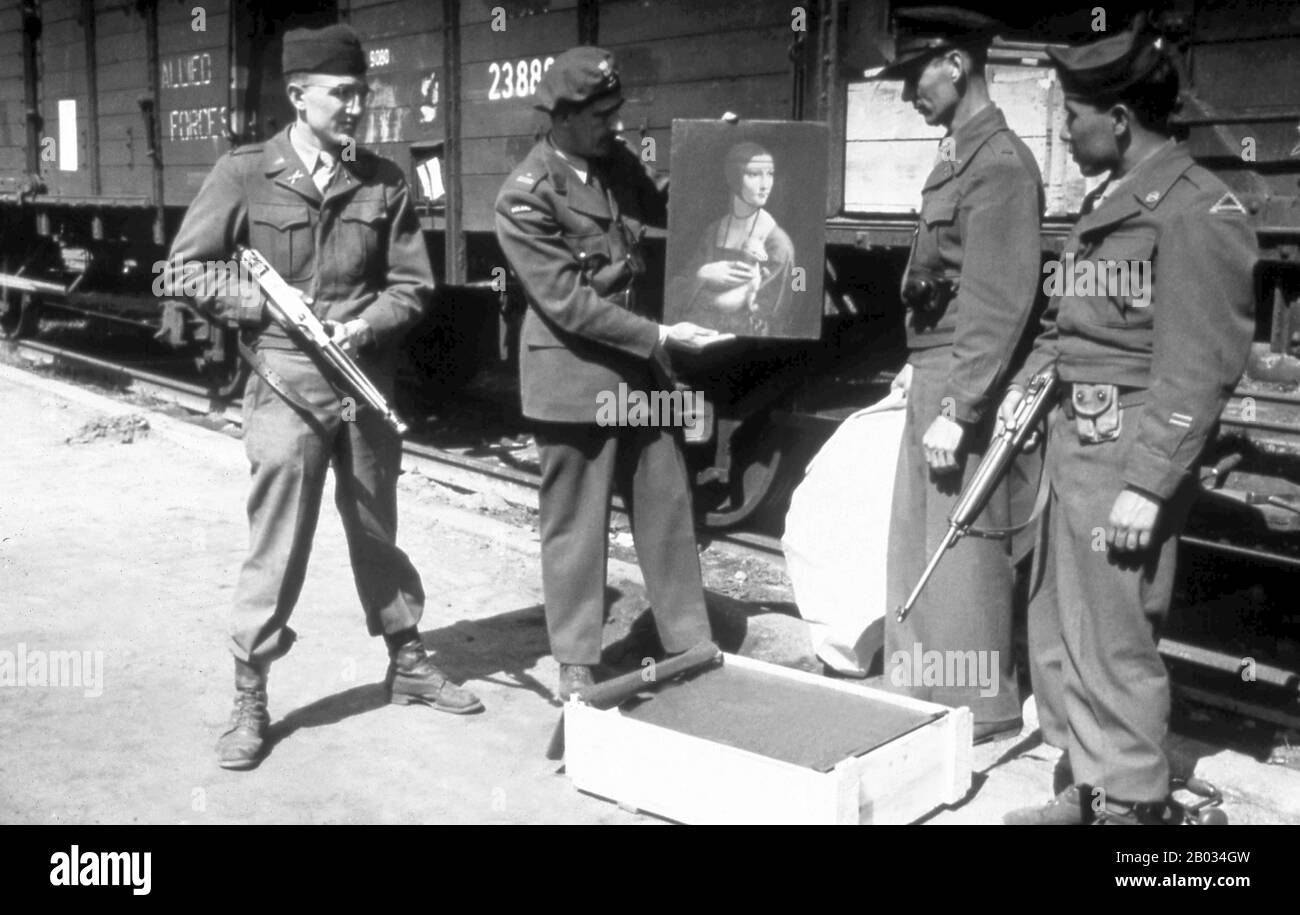'Nazi plunder' refers to art theft and other items stolen as a result of the organized looting of European countries during the time of the Third Reich by agents acting on behalf of the ruling Nazi Party of Germany. Plundering occurred from 1933 until the end of World War II, although most plunder was acquired during the war. In addition to gold, silver and currency, cultural items of great significance were stolen, including paintings, ceramics, books, and religious treasures. Although most of these items were recovered by agents of the Monuments, Fine Arts, and Archives program (MFAA), affe

Image details
Contributor:
CPA Media Pte Ltd / Alamy Stock PhotoImage ID:
2B034GWFile size:
54.9 MB (1.2 MB Compressed download)Releases:
Model - no | Property - noDo I need a release?Dimensions:
5500 x 3492 px | 46.6 x 29.6 cm | 18.3 x 11.6 inches | 300dpiDate taken:
29 August 2016Photographer:
Pictures From HistoryMore information:
This image could have imperfections as it’s either historical or reportage.
'Nazi plunder' refers to art theft and other items stolen as a result of the organized looting of European countries during the time of the Third Reich by agents acting on behalf of the ruling Nazi Party of Germany. Plundering occurred from 1933 until the end of World War II, although most plunder was acquired during the war. In addition to gold, silver and currency, cultural items of great significance were stolen, including paintings, ceramics, books, and religious treasures. Although most of these items were recovered by agents of the Monuments, Fine Arts, and Archives program (MFAA), affectionately referred to as the Monuments Men, on behalf of the Allies immediately following the war, many are still missing.